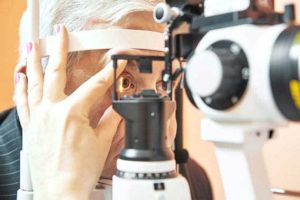Medical marijuana contains over 400 chemicals, including about 66 that are unique to the marijuana plant. These are known as cannabinoids, and they resemble the endocannabinoids that are naturally produced and used by various systems in the human body.
The interactions between cannabinoids and the endocannabinoid system are complex and are not yet completely understood. In some of the eleven diseases and related conditions for which medical marijuana can be prescribed, the body produces abnormally low levels of endocannabinoids. Medical marijuana may help to compensate by taking over the role of the missing endocannabinoids. In addition, medical marijuana has psychoactive effects that help relieve painful and unpleasant symptoms.
Here are five health benefits of medical marijuana:
May reduce chronic pain
Medical marijuana is effective in managing chronic pain resulting from cancer, arthritis, rheumatism, and various neuromuscular disorders, without the unpleasant and sometimes dangerous side effects of opiates. Cannabis acts in a different way from opioid painkillers, alleviating the brain’s emotional response to pain rather than suppressing the sensation of pain.
Unlike opioids, medical cannabis is not addictive. The patient does not require higher and higher doses to achieve the same level of relief. Medical marijuana does not expose patients to the danger of abuse or accidental overdose.
Cannabis can be used by patients who are unable to take nonsteroidal anti-inflammatory drugs (NSAIDs) like ibuprofen and naproxen, because they have liver disease or problems with their kidneys or digestive system.
Patients who use high-CBD medical marijuana to manage pain are able to carry on normal activities such as work or study without getting high. They do not feel groggy or disengaged from the world around them.
Medical Marijuana Seems Safe for Chronic Pain. WebMD.
Helps control epileptic seizures and other neurological symptoms
Medical marijuana helps regulate the release of neurotransmitters in the brain and reduce the bursts of abnormal electrical activity that cause seizures. More than 30% of epilepsy sufferers do not respond well to anti-seizure drugs, and some forms of epilepsy, such as Dravet Syndrome and Lennox-Gastaut Syndrome (LGS), are drug-resistant. Many patients report that taking medical marijuana has reduced the severity and the frequency of their seizures.
Medical marijuana helps reduce muscle spasms and involuntary movements for patients with ALS (Lou Gehrig’s disease) and multiple sclerosis (MS), giving them more freedom of movement and more restful sleep. People with Parkinson’s disease report that medical marijuana reduces their tremors. Some evidence suggests that medical marijuana is a neuroprotector, actually slowing the progress of diseases that attack the nervous system.
The endocannabinoid system plays a role in healing the brain after a traumatic brain injury. Studies on mice have shown that marijuana reduced bruising and swelling of the brain after an injury.
Medical Marijuana May Ease Multiple Sclerosis Symptoms
Found to help fight cancer

By stimulating the appetite, marijuana contributes to weight gain and better nutrition. Marijuana also lifts a patient’s mood, making it easier to tolerate treatment, and improving overall quality of life.
Medical marijuana helps cancer patients manage deep-seated pain while remaining alert and able to enjoy normal activities. Marijuana’s anti-inflammatory effects also reduce pain.
Laboratory studies suggest that medical marijuana could fight cancer in other ways too, boosting the body’s immune response to cancer growth and inducing apoptosis (a process in which cancer cells kill themselves) in certain types of cancer cells.
In the laboratory, and in animal studies, cannabidiol has been demonstrated to stop the spread of several types of aggressive cancer cells
Marijuana And Cancer: Scientists Find Cannabis Compound Stops Metastasis In Aggressive Cancers
Known to fight glaucoma

The structures of the eye have cannabinoid receptors CB1 and CB2, which respond to THC and other cannabinoids in medical marijuana. Some researchers believe that compounds in marijuana stimulate microcirculation in the eye to reduce inflammation and lower IOP. Marijuana was discovered to lower IOP in the 1970s, but the effect wore off quickly. Today’s medical marijuana products are effective for longer periods.
Some patients cannot tolerate the side effects of the medications commonly prescribed to lower IOP, which include dizziness, fatigue, severe asthma attacks, and red and itching eyes, and are unable to continue their treatment. Medical marijuana is a viable alternative.
Intraocular pressure, ocular toxicity and neurotoxicity after administration of cannabinol or cannabigerol. Colasanti, B.K., Craig, C.R., and Allara, R.D. (1984, September). Experimental Eye Research, 39(3), 251-9.
Cannabinoids in the treatment of glaucoma. Jarvinen, T., Pate, D.W., and Laine, K. (2002, August). Pharmacology & Therapeutics, 95(2), 203-20.
Can reduce inflammation and help regulate the immune system
The body’s natural endocannabinoid system helps to regulate immune cells. People suffering from autoimmune diseases often have low levels of naturally produced cannabinoids. The cannabinoids in medical marijuana may replace these missing cannabinoids and prevent immune cells from releasing inflammatory cells.

In patients with multiple sclerosis (MS), scientific studies indicate that cannabinoids suppress the activity of immune cells attacking the central nervous system, and could slow the progress of the disease by lessening the damage to nerve cells.
Marijuana shows potential in treating autoimmune disease. June 2, 2014. University of South Carolina
Could Cannabis Cure Crohn’s Disease? The Huffington Post UK.






